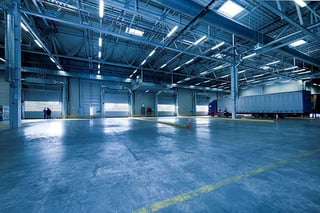
The process of polishing a concrete floor increases the concrete’s density and durability, helping it withstand more wear and tear. That being said, polished concrete floors are not invincible, and they can sustain damage over time. Here are some of the common causes of damage and their remedies:
Damage due to cleaners
To keep your facility’s floors performing at their best, you need to implement weekly cleaning, even if there are no visible stains or dust buildup.
However, one common cause of damage to polished concrete flooring is the use of harsh, unapproved detergents or soaps being used to clean it.
Before committing to a certain kind of detergent or soap for cleaning your facility's floors, check to be sure the product or products you've chosen are safe to use on polished concrete flooring.
Dulling due to high traffic
In areas exposed to especially high foot traffic, the surface of your polished concrete floor may begin to lose some of its gloss. This is more likely to happen for floors with a sealer or burnished topical treatment to give a shiny appearance, and this will wear more quickly over time.
However, if you’ve had a true mechanical concrete polishing job (that is, one in which the gloss comes from the physical buffing of the floor surface instead of from a bottle), the friction from heavy traffic can eventually dull the floor’s shine.
In these cases, a simple rebuffing job (less involved than the initial polishing process) will likely get your floors looking just like new.
Stains and other compromises in color
Concrete, even polished concrete, is a porous substance that can easily be stained by oils, acids, and other liquids that seep down into it. (This is why we recommend a liquid-impervious floor coating such as epoxy or urethane for environments that deal with vehicles or chemicals.)
If your concrete floors have a decorative stain or dye applied in addition to polishing, it may be even more susceptible to discoloration by incorrect cleaners as well.
For surface-level blemishes, it may be possible to have the floor re-buffed to provide a more consistent finish.
Physical damage to the concrete itself
By its very nature, concrete floors will crack over time, and if left unchecked, it can begin to deteriorate (spall) in these places. Damage to concrete floors can also happen via heavy impacts or items being dragged across the floor.
In some cases, you may only need a joint filler or caulk to take care minor cracks. In other cases, you may need a rigid filler or a troweled mortar to repair large areas of the floor. After this step, the floor can be re-stained and re-polished as needed.
Need more information on concrete floor care, or want to ask specific questions about your floor? Feel free to contact us at CPC Floor Coatings. We service areas in the Carolinas, Georgia, and Eastern Tennessee areas, and we would be glad to talk with you about your facility.

